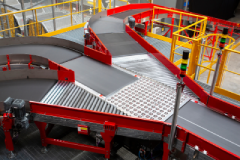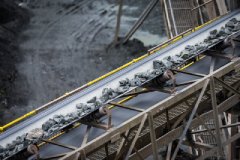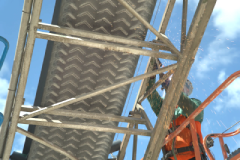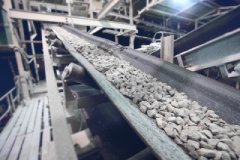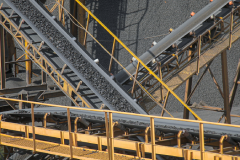Product Spotlight
perma lubrication systems
At Davis Industrial, we’re committed to helping our clients operate safer, more efficiently, and with less downtime. That’s why we’ve partnered with perma, the global leader in single-point and multi-point lubrication systems. With over 50 years of innovation and reliability, perma offers cutting-edge solutions that keep your equipment running longer and smoother—without the guesswork.
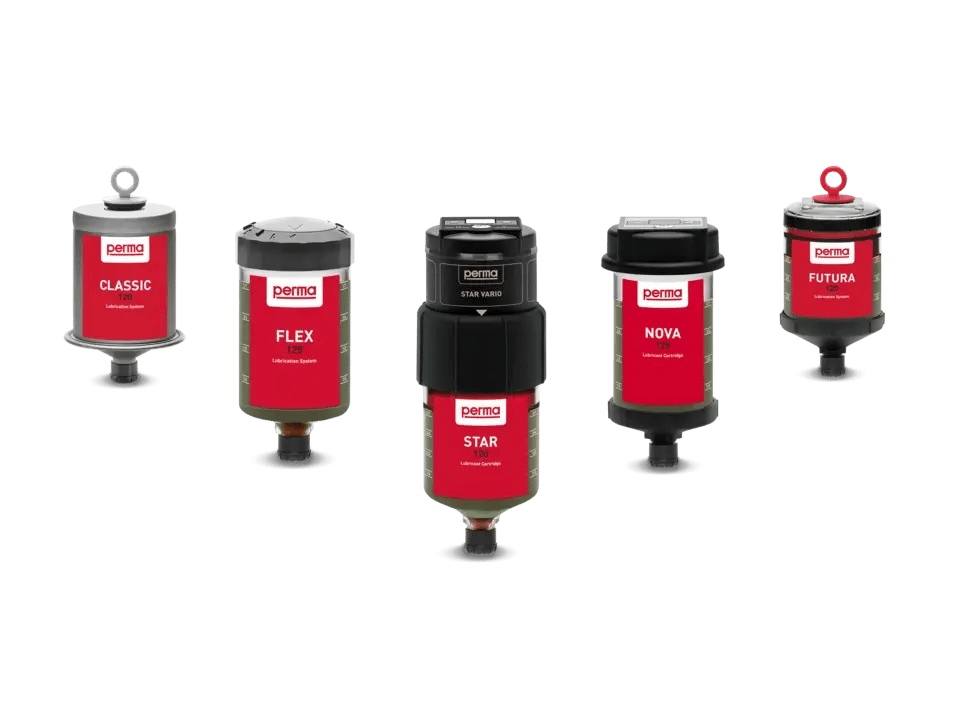
perma is the worldwide benchmark in automatic lubrication. From heavy-duty conveyors to precision machinery, perma systems deliver consistent, controlled lubrication exactly where and when it's needed. These systems eliminate the need for manual greasing, reducing labor time, lubricant waste, and the risk of equipment failure.
Why Davis Industrial + perma?
As your trusted conveyor service partner, we know firsthand the value of proactive maintenance. Adding perma lubrication systems to your preventive maintenance strategy ensures:
Enhanced Safety
Reduced Downtime
Operational Efficiency
Increased Equipment Lifespan
From consultation to installation, Davis Industrial will guide you in choosing the right perma system for your operation. Whether you're managing a distribution center or an aggregate plant, we’ll help you keep your equipment running smoothly.


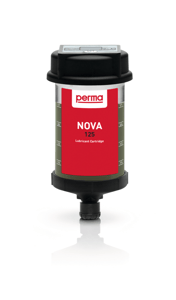
single point
✔️ perma FLEX
A versatile, stand-alone lubrication system for indoor and outdoor applications—even in tight or hazardous areas. Perfect for a wide range of industries.
- Adjustable discharge period: 1–12 months
- Ready-to-use and easy to install
- Transparent housing for visual monitoring
✔️ perma STAR VARIO
Digitally controlled lubrication with unbeatable precision.
- Motor-driven lubrication system
- Temperature-independent performance
- LCD display with data logging
- Ideal for critical applications
✔️ perma NOVA
The robust choice for extreme conditions.
- Ex-rated for hazardous areas (ATEX certified)
- Temperature-independent from -4°F to +140°F
- Safe and reliable for mining, processing,m and chemical environments
Past Spotlights
Belt Cleaners
BELT CLEANERS
Conveyor belt cleaners play a pivotal role in maintaining the efficiency and longevity of conveyor systems. They are designed to remove residual material from the belt, which is crucial for several reasons. It helps to minimize the need for maintenance, reduces material loss, and can extend the life of the belt by preventing damage from trapped materials.
BENEFITS OF CONVEYOR BELT CLEANERS
Increased Operational Efficiency
By removing debris and materials that may adhere to the belt, cleaners ensure that the conveyor system runs smoothly. This prevents unnecessary downtimes caused by material buildup that can affect the belt's movement and the conveyor's overall performance.
Extended Belt Life
Material buildup on the belt can cause premature wear and tear, leading to costly replacements. Cleaners extend the lifespan of conveyor belts by preventing rough materials from grinding against the belt surface and edges, thereby saving money in the long run.
Improved Workplace Safety
Accumulated debris can pose significant safety risks, including slip and fall hazards and the potential for material to get caught in the conveyor machinery. Cleaners help minimize these risks, creating a safer work environment for all.
TOP 3 REASONS TO HAVE CONVEYOR BELT CLEANERS INSTALLED:
- Cost Savings: The primary reason to invest in conveyor belt cleaners is the significant cost savings. By reducing the wear on the belt and preventing damage to other conveyor components, businesses can save on maintenance and replacement costs. Additionally, efficient cleaners minimize downtime, ensuring that operations continue without costly interruptions.
- Enhanced Productivity: A clean conveyor belt is essential for maintaining the flow of operations. Cleaners ensure that materials are transported effectively without spillage or sticking, which can lead to blockages or the need for manual cleaning. This consistent operation enhances productivity and ensures that deadlines are met without delay.
- Compliance and Environmental Responsibility: Many industries are subject to strict environmental regulations regarding dust and material spillage. Conveyor belt cleaners help companies comply with these regulations by reducing material loss and preventing spillage into the environment. This not only aids in compliance but also promotes a company's commitment to environmental responsibility.
In summary, conveyor belt cleaners are an essential component for any business that relies on conveyor systems for material handling. They offer a trifecta of benefits: cost savings, enhanced productivity, and compliance with environmental standards, making them a wise investment for operational success.
TYPES OF CONVEYOR BELT CLEANERS:
Understanding the different types of conveyor belt cleaners is crucial for optimizing the performance and longevity of a conveyor system. Here are the definitions for primary, secondary, and tertiary conveyor belt cleaners:
- Primary Conveyor Belt Cleaners
Primary conveyor belt cleaners are installed on the conveyor head pulley's face or immediately downstream. Their main function is to remove the majority of material adhering to the belt surface immediately after the bulk material discharge point. By doing so, they play a crucial role in preventing material carryback, which can accumulate under the conveyor and cause operational problems. Primary cleaners typically feature a single blade and are the first line of defense against material build-up on the belt.
- Secondary Conveyor Belt Cleaners
Secondary conveyor belt cleaners are located immediately after the primary cleaners and are designed to remove fine particles and materials that the primary cleaners did not capture. They often feature multiple blades or brushes and target the finer residues left on the belt, further reducing carryback and improving conveyor efficiency. Secondary cleaners are essential for maintaining cleanliness and efficiency, especially in applications where material carryback is a significant concern.
- Tertiary Conveyor Belt Cleaners
Tertiary conveyor belt cleaners are installed further down the conveyor line, typically after the secondary cleaners or at points where additional cleaning is necessary to ensure the belt is as clean as possible before it returns to the loading point. Tertiary cleaners are used in applications requiring extremely high levels of cleanliness and minimal material carryback. They may include specialized cleaners like brush cleaners or air knives, which provide a final touch-up to remove any remaining dust or particles.
Each type of conveyor belt cleaner plays a specific role in the material handling process, contributing to the overall efficiency, safety, and longevity of the conveyor system. Selecting the appropriate type and combination of cleaners depends on the nature of the material being conveyed, the conveyor design, and the operational requirements of the system.
Blow Bars
BLOW BARS
Blow bars stand as the heart of a primary impact crusher, a machine that's indispensable in the rugged terrain of quarrying and the demanding environment of demolition. These essential components, securely mounted on the crusher's rotors, play the pivotal role in the crushing process. It's the blow bars that meet the material head-on, striking with force enough to break it apart and commence the process of size reduction. This initial contact is crucial, as it sets the stage for what the final product will be, influencing both size and shape.
The materials from which blow bars are constructed vary widely, each chosen for its particular strengths and suitability to specific tasks. This diversity in material choice allows for customization according to the unique demands of each application, directly impacting the blow bars' longevity and resistance to wear. For instance, materials that excel in abrasive conditions may wear down faster when exposed to less abrasive materials, and vice versa. Understanding the nature of the material to be crushed, therefore, becomes paramount in selecting the right type of blow bar, not only to ensure effective crushing but also to optimize the wear rate and extend the service life of these critical components.
In essence, the composition and quality of blow bars are foundational to the efficient operation of primary impact crushers. Their role cannot be understated; they are the first point of contact, the initial impactors that begin the transformative process of turning large, unwieldy materials into smaller, manageable pieces. The choice of blow bar material, shaped by the specific needs of the application, thus becomes a key decision point in the maintenance and operation of an effective crushing system.
Benefits of Changing Out Your Blow Bars
- Optimized Performance: Regularly replacing blow bars ensures that the crusher operates at peak efficiency. New blow bars maintain optimal crushing performance and better distribute the forces exerted on the crusher.
- Reduced Operating Costs: Worn blow bars lead to increased energy consumption and reduced crushing efficiency that can result in higher operational costs. Fresh blow bars improve energy efficiency and reduce overall operational expenses.
- Consistent Product Size: Fresh blow bars help maintain a uniform output granularity. As blow bars wear, the crush size can become inconsistent, which can affect downstream processes and quality of the material.
Types of Blow Bars
- High Chrome Blow Bars: Made of high chrome steel, these blow bars are suited for handling abrasive materials because of their high wear resistance.
- Low Chrome Blow Bars: These are best for crushing less abrasive materials like limestone. They offer more durability but are not suitable for handling materials that cause high wear.
- Martensitic Steel Blow Bars: Known for their high impact resistance, these blow bars are good for primary crushing applications where impact is more significant than abrasion.
- Ceramic Matrix Composites: These blow bars are embedded with ceramic particles which provide high resistance to wear and extend the service life of the bars, especially in highly abrasive conditions.
Changing blow bars at regular intervals is part of the regular maintenance schedule that should be adhered to ensure the longevity and efficiency of the primary crushers used in industrial applications. Davis Industrial can provide expert consultation and services to help maintain your primary crusher’s blow bars, ensuring your operations run smoothly and effectively.

